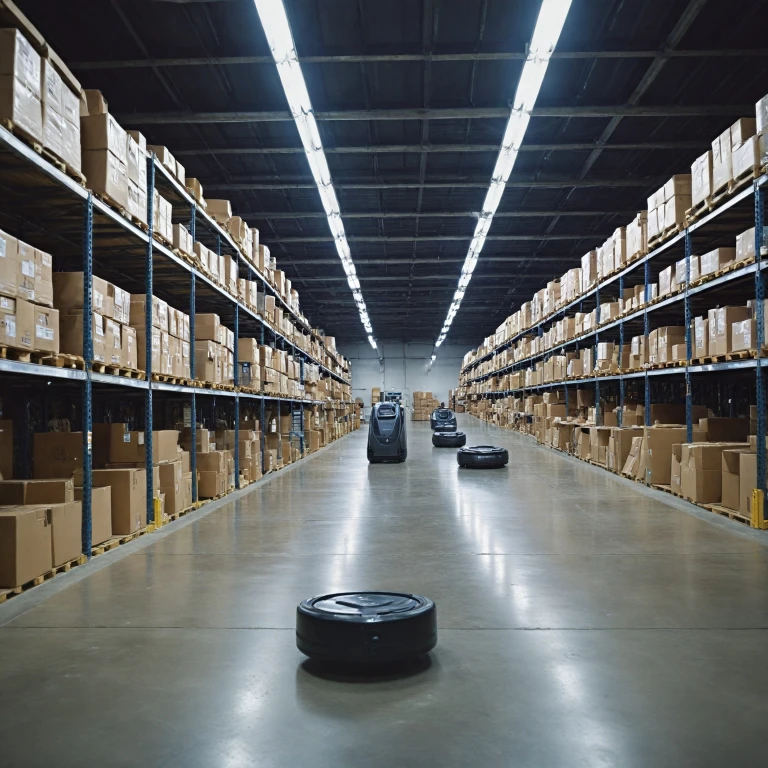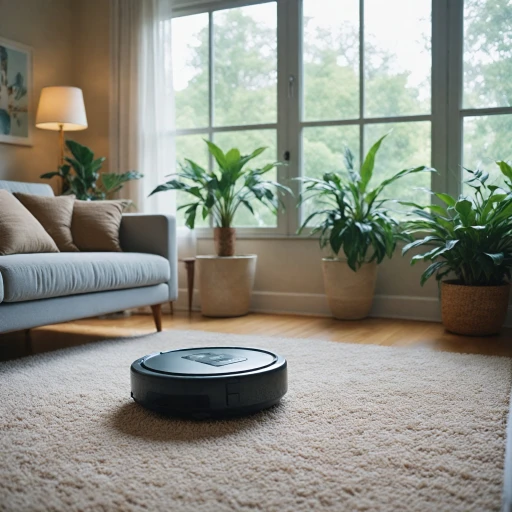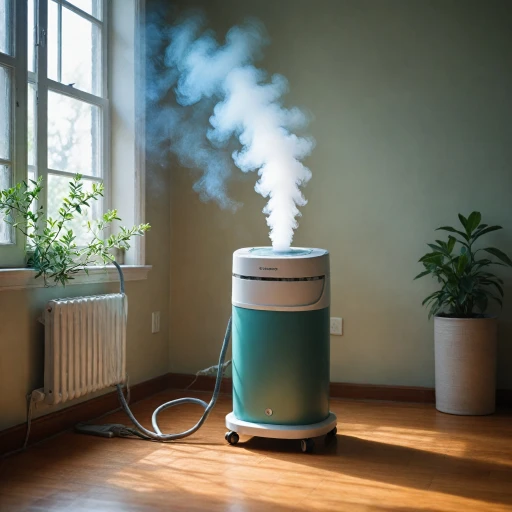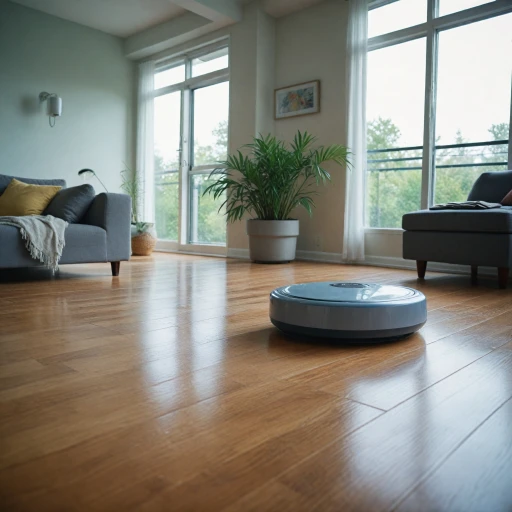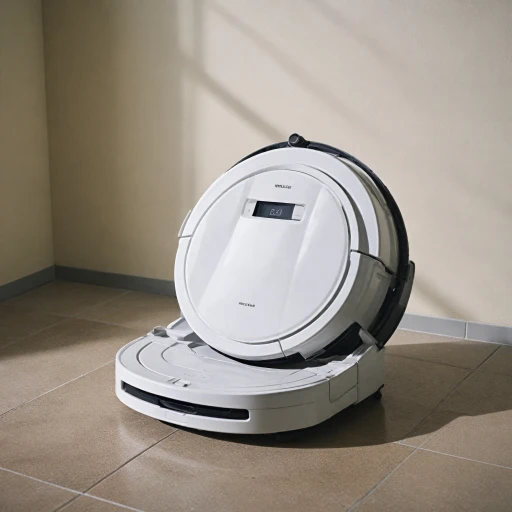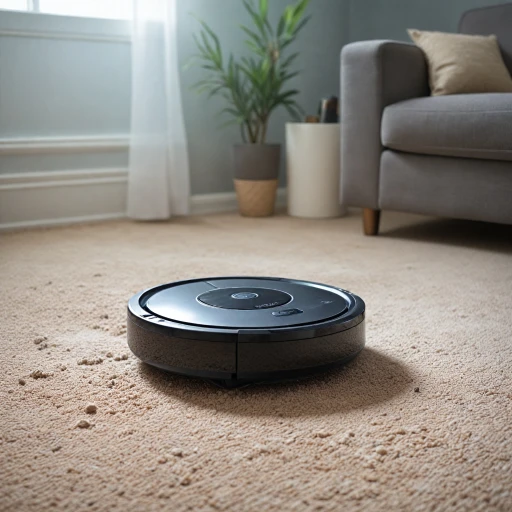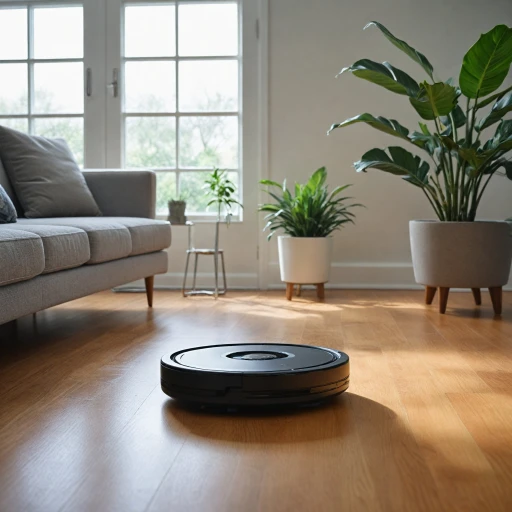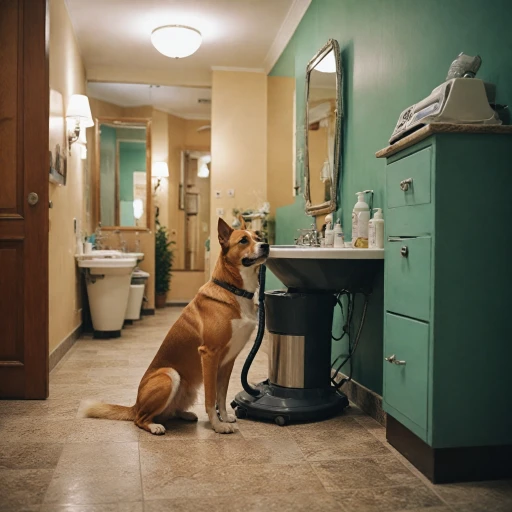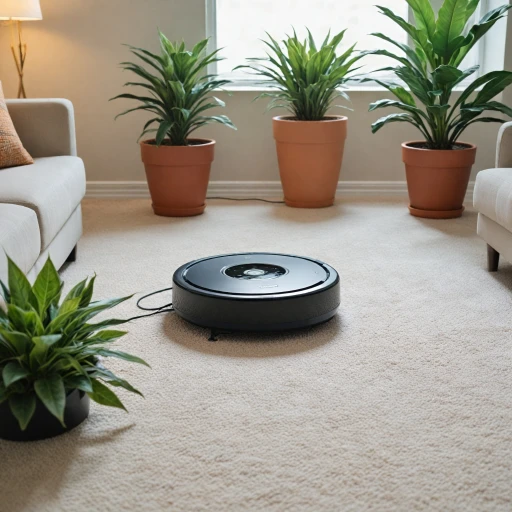
Understanding Industrial Robot Vacuums
Introduction to Industrial Robot Vacuums
Industrial robot vacuums are revolutionizing the way warehouses and commercial spaces approach floor cleaning. These advanced machines are designed to tackle the unique challenges of large-scale environments, offering a comprehensive solution for maintaining cleanliness and efficiency.
How They Work
At the core of these robotic vacuums is sophisticated technology that enables them to navigate complex spaces autonomously. Equipped with advanced sensors and cameras, they can detect obstacles and map their surroundings, ensuring thorough cleaning operations without human intervention. This mapping technology is crucial for adapting to different types of flooring and varying warehouse layouts.
Efficiency and Productivity
By automating the cleaning process, industrial robot vacuums significantly reduce labor costs and enhance productivity. These machines are capable of operating continuously, saving time and ensuring a safer working environment by minimizing dust and debris. As a result, businesses can focus their workforce on more critical tasks, leading to improved overall efficiency.
Cost-Effective Solutions
Investing in robotic vacuums can lead to substantial cost savings over time. Not only do they reduce the need for manual labor, but they also minimize wear and tear on flooring by providing consistent and gentle cleaning. This makes them a cost-effective solution for maintaining large commercial spaces.
As we explore further, we'll delve into the key features and technologies that make these vacuums indispensable in modern warehouse cleaning operations.
Key Features and Technologies
Advanced Technologies
The realm of industrial robot vacuums employs sophisticated technologies designed to tackle the demanding cleaning operations found in commercial settings, such as warehouses and large-scale facilities. These machines leverage advanced sensors and cameras to maneuver through complex environments, detect obstacles, and ensure comprehensive cleaning.Smart Mapping and Navigation
Modern robotic vacuum solutions utilize mapping technology, which allows these machines to efficiently plot a path across various types of flooring. This technology is crucial for optimizing floor cleaning routines in spaces cluttered with materials, equipment, and debris, found typically in warehouses. By employing smart mapping capabilities, these machines can not only clean but do so while saving time and reducing labor costs, contributing to higher efficiency productivity in cleaning operations.Industrial-Grade Resilience
Industrial robot vacuums are built to withstand the rigors of a commercial environment. They are designed to clean larger areas and handle more dust debris compared to home models. Given their robust clean capabilities, they are essential for maintaining a safer working environment by ensuring floor cleaning is consistent and thorough, which translates to cost savings in the long term.Enhanced Safety Features
For any robotic vacuum platform, the safety of the working environment is paramount. With the employment of advanced sensors, these vacuums can operate safely alongside human colleagues, reducing the risk of accidents. Their ability to automatically navigate away from obstacles contributes to a safer, more efficient workspace.Eco-Friendly Battery Technology
Many industrial robotic solutions now integrate eco-friendly battery technology, which extends the operational life of the vacuum while minimizing environmental impact. These advanced power solutions ensure that the robots can perform extensive cleaning without frequent recharges, further aiding in productivity and operational costs. For an in-depth look into how these technologies integrate with consumer models, consider exploring the convenience of the auto empty dock station for Roborock S7, which sheds light on similar innovations across different product lines.Benefits of Using Industrial Robot Vacuums
Reaping the Rewards of Industrial Robot Vacuums
Industrial robot vacuums have revolutionized the way warehouse cleaning and floor cleaning operations are conducted in commercial sectors. By exploring this innovative technology, companies can unlock an array of benefits that significantly enhance productivity and efficiencies. Here’s how: Bullet List for Clarity:- Cost Savings: Implementing robotic vacuum solutions can lead to substantial cost reductions. With reduced labor costs, companies no longer need to rely as heavily on human labor for tasks such as vacuuming expansive warehouse floors.
- Enhanced Efficiency: Industrial robot vacuums work tirelessly and autonomously, providing around-the-clock cleaning solutions. This means floors are maintained in optimal condition without any direct supervision, significantly improving workflow and warehouse productivity.
- Advanced Technology: Equipped with advanced sensors and cameras, these robotic vacuums can efficiently navigate through various types of flooring, detect obstacles, and avoid unwanted collisions. This technology ensures a safer working environment by preventing accidents that are typically associated with manual cleaning.
- Improved Cleaning Operations: Using sophisticated mapping technology, these robots can cover vast floor spaces methodically and thoroughly. They excel at clearing dust debris and litter from commercial settings, ensuring a cleaner and more secure area for employees and inventory.
- Safer Working Environment: By minimizing the need for manual labor, robotic vacuums contribute to safer working conditions. They help reduce the risk of physical strain and injuries that often come from traditional cleaning tasks.
- Saving Time: Operations that once took significant manpower and time can now be done more swiftly with industrial robot vacuums. This time saving can be redirected to more strategic tasks, boosting overall productivity.
Challenges and Considerations
Overcoming Hurdles in the Use of Industrial Robot Vacuums
Implementing industrial robot vacuums in cleaning operations is not without its challenges. While these advanced solutions promise significant efficiency and productivity improvements, several factors must be considered to ensure seamless integration and effective performance in diverse working environments.
Initial Investment Costs
For many businesses, the initial investment in commercial robot vacuums can be substantial. Advanced technology, such as high-tech sensors and cameras, combined with sophisticated mapping technology, does come with a price tag. However, these upfront costs can often be offset by long-term benefits such as reduced labor costs and improved operational efficiency.
Reliable Performance Across Various Surfaces
Industrial robots must adapt to different types of flooring commonly found in warehouses. Ensuring effective floor cleaning on surfaces that may include tile, concrete, or carpets can require specific adjustments and settings. The vacuum's ability to detect obstacles and navigate around them safely is crucial for maintaining efficient cleaning operations.
Integration with Existing Systems
Incorporating robotic vacuums into current cleaning systems can pose logistical challenges. Companies need to ensure that the technology integrates smoothly with their existing workflow without disrupting current operations. This often requires careful planning and possibly even restructuring of warehouse cleaning schedules.
Maintenance and Technological Upkeep
Like any advanced machinery, robot vacuums require regular maintenance and updates to stay effective. Compliance with scheduled maintenance can prevent future breakdowns and ensure that the robots continue to deliver optimal results in terms of cleanliness and dust debris handling. Staying informed about software updates is critical to maintaining functionality and efficiency.
As we explore further advancements in robot vacuum technology, overcoming these challenges will be vital for enhancing productivity in warehouse settings, ultimately leading towards a future warehouse that exemplifies efficiency and safer working conditions.
Industry Applications
Different Sectors Thriving with Industrial Robot Vacuums
The use of industrial robot vacuums has been expanding across various sectors, each benefiting uniquely from the technology.Warehouses
In warehouse cleaning, the introduction of robotic vacuums has revolutionized how companies maintain clean floors and improve their working environment. Packing and logistics facilities, often filled with dust debris and small particles, benefit significantly from these cleaning solutions. Not only do they detect obstacles and navigate complex layouts with advanced sensors and cameras, but they also ensure a safer working environment by keeping pathways clear and floors free from clutter.Manufacturing Plants
Manufacturing plants are another prime benefactor of robotic vacuum deployment. By automating floor cleaning, these facilities benefit from cost savings on labor, as fewer personnel are required for day-to-day cleaning operations. Additionally, the robots can cover a wide variety of flooring types, from slick tiles to industrial concrete, ensuring every square inch is maintained to the highest standards. Enhanced productivity in these areas results from the time-saving nature of the technology.Commercial Spaces
Commercial environments such as malls and office buildings have started investing in these robotic solutions. The reduced labor costs and increase in cleaning efficiency make them an ideal choice for maintaining high-traffic public spaces. The advanced mapping technology enables them to tackle diverse layouts and ensure all areas are regularly cleaned, contributing to an inviting and hygienic space for customers and employees alike. This adoption across multiple sectors highlights the effectiveness and adaptability of industrial robot vacuums as a crucial tool in future warehouse and commercial cleaning strategies. Their ability to improve efficiency and maintain productivity while also offering advanced cleaning solutions places them at the forefront of contemporary cleaning operations.Future Trends in Industrial Robot Vacuum Technology
Emerging Innovations in Robot Vacuum Technology
As the field of industrial robot vacuums evolves, several key trends are shaping their future. These advancements not only seek to improve the efficiency and effectiveness of warehouse cleaning but also to reduce operating costs and enhance safety.- Enhanced Mapping and Navigation: Advanced sensors and cameras are increasingly being integrated into robotic vacuum technology, allowing for more precise mapping and obstacle detection. This ensures optimal cleaning paths and minimizes missed spots in complex warehouse layouts.
- Adaptability to Different Environments: Future robot vacuums are being designed to handle various types of flooring, adapting to different surfaces seamlessly. This capability is crucial in environments where different floor types exist, ensuring thorough cleaning without manual adjustments.
- Focus on Cost Savings: As labor costs continue to rise, robotic vacuums present a viable solution for reduced labor expenses. By enhancing both efficiency and productivity, these devices contribute significantly to cost savings over time.
- Integration with IoT and AI: The next generation of robotic vacuums will likely incorporate Internet of Things (IoT) connectivity and Artificial Intelligence (AI), providing deeper insights into cleaning operations and allowing for real-time adjustments based on the nature of the debris or dust encountered.
- Eco-Friendly Innovations: With an increasing focus on sustainability, manufacturers are exploring eco-friendly solutions, such as energy-efficient operations and low-emission technologies. This not only reduces the environmental impact but also aligns with broader green initiatives within commercial sectors.
